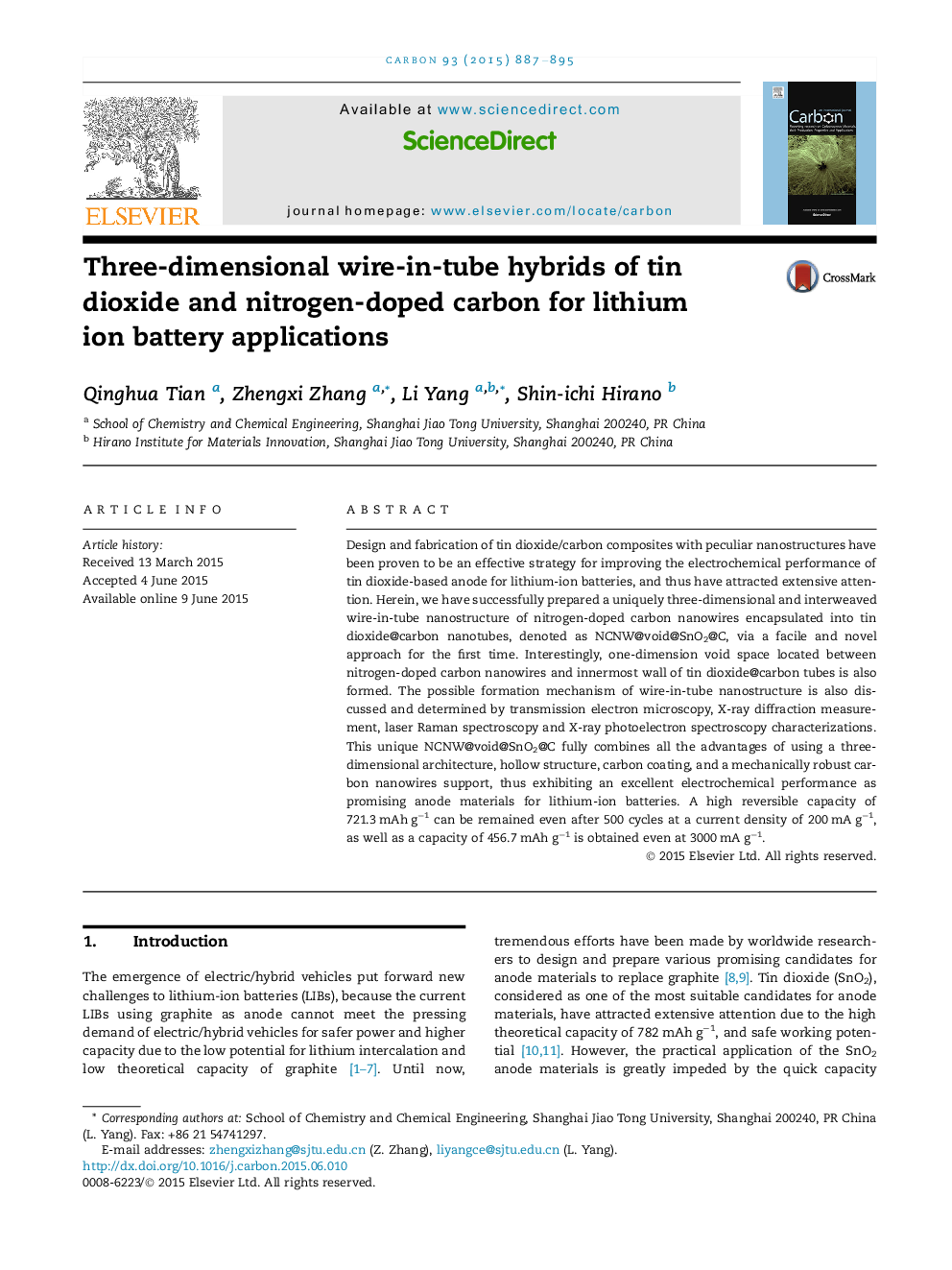| Article ID | Journal | Published Year | Pages | File Type |
|---|---|---|---|---|
| 7851831 | Carbon | 2015 | 9 Pages |
Abstract
Design and fabrication of tin dioxide/carbon composites with peculiar nanostructures have been proven to be an effective strategy for improving the electrochemical performance of tin dioxide-based anode for lithium-ion batteries, and thus have attracted extensive attention. Herein, we have successfully prepared a uniquely three-dimensional and interweaved wire-in-tube nanostructure of nitrogen-doped carbon nanowires encapsulated into tin dioxide@carbon nanotubes, denoted as NCNW@void@SnO2@C, via a facile and novel approach for the first time. Interestingly, one-dimension void space located between nitrogen-doped carbon nanowires and innermost wall of tin dioxide@carbon tubes is also formed. The possible formation mechanism of wire-in-tube nanostructure is also discussed and determined by transmission electron microscopy, X-ray diffraction measurement, laser Raman spectroscopy and X-ray photoelectron spectroscopy characterizations. This unique NCNW@void@SnO2@C fully combines all the advantages of using a three-dimensional architecture, hollow structure, carbon coating, and a mechanically robust carbon nanowires support, thus exhibiting an excellent electrochemical performance as promising anode materials for lithium-ion batteries. A high reversible capacity of 721.3 mAh gâ1 can be remained even after 500 cycles at a current density of 200 mA gâ1, as well as a capacity of 456.7 mAh gâ1 is obtained even at 3000 mA gâ1.
Related Topics
Physical Sciences and Engineering
Energy
Energy (General)
Authors
Qinghua Tian, Zhengxi Zhang, Li Yang, Shin-ichi Hirano,
